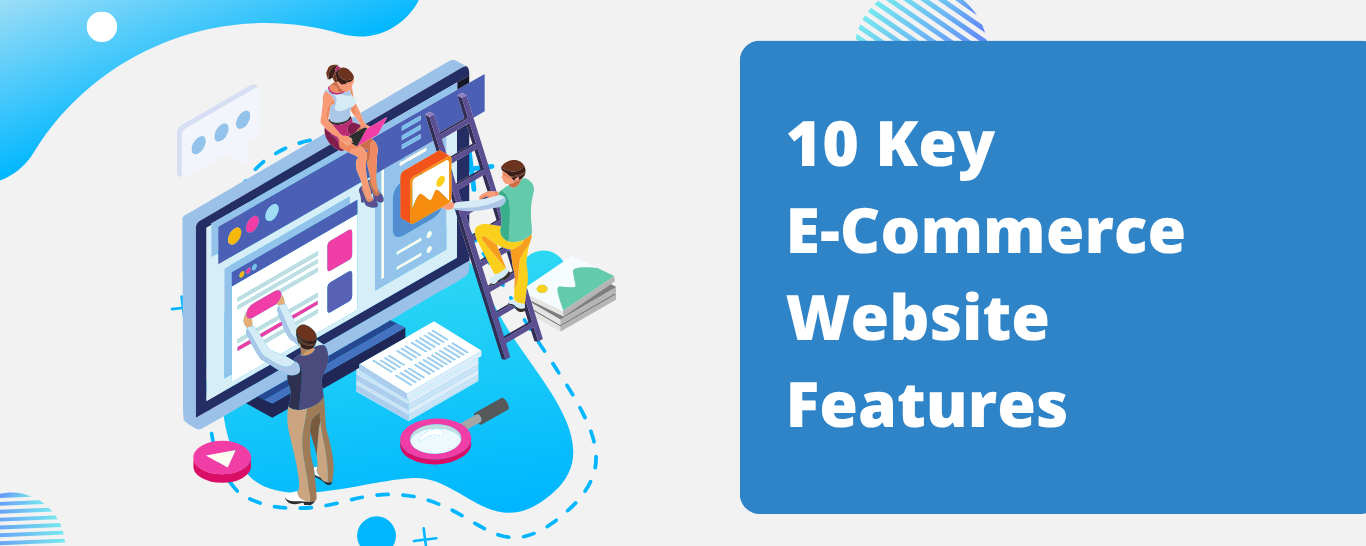
As consumer habits rapidly evolve and technology advances by leaps and bounds, e-commerce websites have transformed from simple transaction platforms into highly interactive, data-driven brand touchpoints. For retailers aiming to stand out in the digital battlefield of 2025, basic website functionality is no longer sufficient. Success now hinges on intelligent operations, omnichannel experiences, and highly personalized recommendations to truly engage consumers and drive revenue growth.
In the following, we will break down the 10 essential features every e-commerce website must have in 2025, helping retailers stay ahead of trends and strategically plan for the future.
1. Responsive Web Design (RWD)
In today’s multi-device internet landscape, Responsive Web Design, RWD (RWD) has become a fundamental requirement for any e-commerce platform. Whether customers are browsing on a desktop, laptop, tablet, or smartphone, the website should automatically adjust its layout and content to provide the best possible viewing and shopping experience.
Implementing RWD not only enhances user satisfaction and increases time spent on the site but also benefits SEO rankings, as Google prioritizes mobile-friendly websites. Moreover, having a unified front-end structure reduces development and maintenance costs, eliminating the need to design separate pages for each device.
A well-designed responsive e-commerce site should include the following features:
-
Layouts that automatically scale and adapt to different screen sizes
-
Product images that are flexible and remain sharp at any resolution
-
A clean and intuitive navigation menu optimized for touch interaction
-
A seamless shopping cart and checkout experience across all devices
Don’t let poor usability drive potential customers away. Creating a responsive e-commerce website is the first step toward increasing conversion rates and building a professional brand image.
2. User-Friendly Site Navigation
A successful e-commerce website must enable users to easily find the products or information they’re looking for. This requires a site navigation design that is clear, logically structured, and intuitive to use. From the homepage to product categories, search functions, filters, shopping cart, and checkout process—every step should feel smooth and effortless.
User-friendly navigation not only improves the user experience but also helps reduce bounce rates and increase conversion rates. Well-organized category labels and clearly defined menus allow customers to quickly locate products, while effective search and filtering tools help shorten shopping time and boost satisfaction.
When designing your site navigation, consider the following:
-
Use clear and understandable categories and headings
-
Keep the navigation bar fixed at the top for easy access
-
Include an internal search function with filters
-
Support breadcrumb navigation to help users understand their location on the site
3. Multi-Layered Security Protection
Ensuring the safety of users’ personal information and transactions is one of the most critical responsibilities for any e-commerce platform. Multi-layered security protection effectively prevents hacking, data breaches, and fraud, allowing customers to shop with confidence and enhancing brand trust.
Common security measures include SSL encryption, two-factor authentication (2FA), firewalls, data backups, and regular security audits. Additionally, secure password storage and monitoring of payment processes are essential components.
A comprehensive security system protects not only consumers but also the business from significant financial and reputational damage, serving as the foundation for the long-term, stable operation of an e-commerce website.
.png)
4. Efficient Product Management System
A robust and efficient product management system is central to the smooth operation of an e-commerce website. It simplifies complex product management tasks, ensuring real-time updates of inventory, pricing, and product launch or removal schedules, thereby maintaining accurate and timely website information.
An effective product management system should include the following features:
-
Inventory Management: Real-time monitoring of stock levels with automatic low-stock alerts to prevent out-of-stock situations
-
Pricing and Promotion Settings: Flexible pricing adjustments and support for various promotional campaigns and discount schemes
-
Product Launch and Removal Scheduling: Ability to schedule product availability, ideal for seasonal merchandise management
-
Bulk Operations: Support for bulk addition, modification, and deletion of products to improve management efficiency
-
Category Management: Clear product categorization for easier browsing and searching by customers
-
Quick Product Information Updates: Fast editing and publishing of product descriptions, specifications, images, and more
Additionally, the system should provide automated alert functions, such as:
-
Low Stock Alerts: Instant notifications prompting restocking to avoid sales interruptions
-
Expiry Alerts for Perishable Goods: Reminders for merchants to run promotions or clear stock to minimize losses
By leveraging these features, merchants can significantly improve product management efficiency and accuracy, preventing sales losses caused by inventory errors or pricing changes. This also allows for more agile responses to market shifts, enabling timely sales strategy adjustments and maintaining healthy inventory and stable operations.
5. Smooth Shopping Cart and Checkout Process
The shopping cart and checkout process are critical stages that influence a customer’s purchasing decision. A smooth and straightforward process can significantly reduce cart abandonment and increase conversion rates. The website should support multiple payment options and ensure that users feel secure and comfortable during checkout.
High-quality checkout design includes a clear order summary, flexible discount and coupon input, easy-to-fill shipping information, and clear payment process guidance. Additionally, offering a guest checkout option allows customers who don’t want to register an account to complete their purchase quickly.
A seamless shopping experience not only encourages repeat purchases but also promotes positive word-of-mouth and brand loyalty.
6. Multiple Payment Methods
To meet the diverse needs of customers, e-commerce websites must offer a variety of payment options. In addition to credit cards and bank transfers, supporting mobile payments (such as Apple Pay, Google Pay), third-party payment platforms (like PayPal, Stripe), and cash on delivery options is essential.
Multiple payment methods not only enhance customer convenience but also boost conversion rates. Customers can choose the payment option that best suits their habits and preferences, reducing the chances of abandoned purchases due to payment limitations.
When designing the payment system, it is also important to ensure transaction security and provide clear payment instructions and customer support, making the shopping experience more reassuring.
.png)
7. Efficient Order Management System
The order management system is one of the core backend operations of an e-commerce website. It helps merchants track every transaction in real-time—from order placement to delivery completion—ensuring smooth coordination between logistics and customer service.
An efficient order management system should include the following features:
-
Real-Time Order Status Updates: Transparent tracking from order placement, payment, preparation, shipment, to delivery completion
-
Automated Notification System: Sends order confirmations, shipping notifications, and tracking codes to customers, enhancing their shopping experience
-
Multi-Channel Order Integration: Consolidates orders from the website, mobile app for unified management
-
Refund and Return Processing: Quickly handles return and exchange requests while updating order status to avoid information confusion
-
Data Reports and Analytics: Generates sales reports, return rate analysis, and customer purchasing behavior insights to support business decisions
-
Order Allocation and Warehouse Management: Assists in assigning orders to different warehouses or suppliers to improve shipping efficiency
With these features, merchants can better control the order workflow, improve logistics coordination, and provide customers with timely and accurate order information, thereby boosting purchase confidence and repeat business.
8. Clear Shipping and Return Information
In the e-commerce shopping journey, transparency regarding shipping and return policies greatly influences customers’ confidence and satisfaction. Shoppers want to clearly understand delivery times, shipping fees, package tracking methods, and the process and conditions for returns and refunds before placing an order. Comprehensive and easily accessible shipping and return information helps reduce customer service inquiries, improves brand reputation, and decreases lost sales due to uncertainty.
The website should present shipping and return details in a clear and concise manner, with prominent reminders on the shopping cart and checkout pages so consumers can quickly access this information at any time. Additionally, providing FAQs and live customer support to address consumer questions is an essential service component.
Clear shipping and return information should include the following key points:
-
Available shipping methods and estimated delivery times
-
Shipping fee calculation and free shipping thresholds
-
Package tracking features and notification methods
-
Return application procedures and deadlines
-
Conditions for returned items and refund processing times
-
Exceptions (such as sale items, customized products, etc.)
-
Customer service contact options and operating hours
Stay Ahead by Embracing the Future of E-Commerce
As competition intensifies in 2025, having a feature-rich, seamless, and intelligently integrated e-commerce website is no longer optional—it’s essential. From AI-powered personalization and real-time customer support to mobile-first experiences and integrated POS systems, these features are not just "nice to have"—they're mission-critical for increasing conversions, improving customer loyalty, and driving sustainable growth.
At Posify, we understand the real challenges of bridging in-store and online retail. You don’t just need technology—you need a smart, scalable solution that drives performance and revenue. Our intelligent POS system and e-commerce platform work seamlessly together to help you:
-
Synchronize products and inventory across all channels
-
Gain real-time insights into sales and customer behavior
-
Deliver a unified, premium customer experience
👉 Take the next step—bring your retail business into the future of unified commerce!


.png)
.png)




